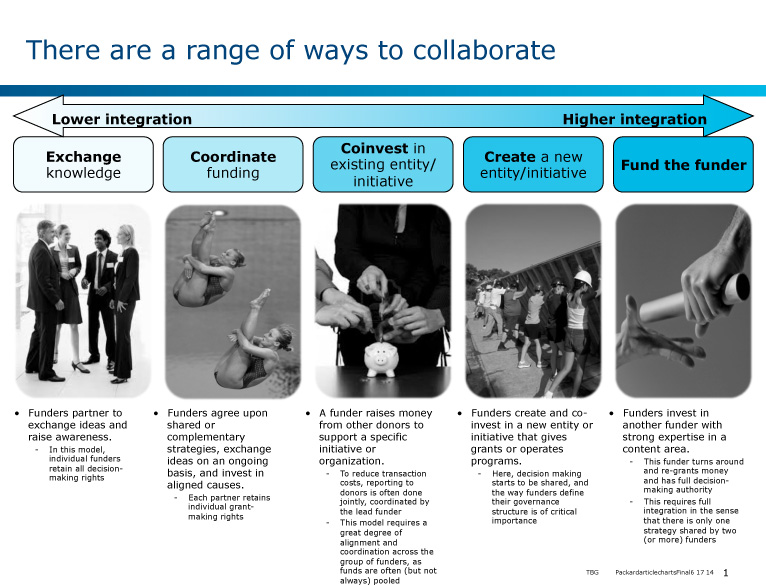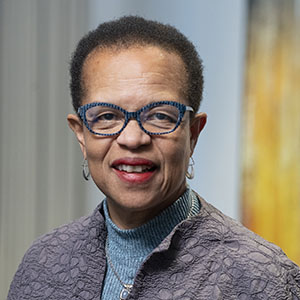Executive Summary
Funder collaboration has been a hot topic in philanthropy for years. But interest has grown of late as more funders realize that individual efforts simply are not enough to address complex social problems. The David and Lucile Packard Foundation has championed this view for decades as it has worked with dozens of other funders towards a common purpose.
"Consistent with our 'capacity to think big,' collaboration has been one means to allow us to take on larger social agendas, tougher issues, and longer-term challenges while knowing we are in deliberate coordination with others," said Carol Larson, president and CEO. Today, Packard participates in over 60 collaborations in its five program areas. Its investments have ranged from hundreds of thousands to hundreds of millions of dollars.
As the Foundation approached its 50th anniversary this year, it asked The Bridgespan Group to assist in taking stock of what Packard can learn from its many collaborations. When it comes to the structure of collaborations, Bridgespan has identified five main models: knowledge exchange, coordination of funding, coinvesting in an existing entity, creating a new entity, and funding the funder. As with all taxonomies, these five categories are meant to serve as signposts along a continuum. Each collaboration differs in a variety of ways, whether it is the flow of funds, decision making, expectations and roles of funding partners, or legal structure. Bridgespan focused on Packard's collaborations that require alignment and more intensive coordination by program staff. Six case studies provide an in-depth look inside examples of all four types of collaboration that venture beyond exchanging knowledge.
Clearly, collaboration can be a powerful means to amplify resources and impact, as this report presents in some detail. But good intentions aren't enough to ensure success. Bridgespan's exploration of Packard's collaborations identified a number of factors that significantly raise the chances of achieving stated goals. Some are strategic in nature; others are practical. All have value for other foundations as they reflect on their own collaborative efforts.
Case Studies
Case Studies from Lessons in Funder Collaboration
Follow the links below to download individual Case Studies from Lessons in Funder Collaboration:
- California Forward
Packard and four funding partners created a new nonpartisan organization to bring about fiscal, structural, and democratic process reform to the California government. - The Climate and Land Use Alliance
Packard created a new entity and coordinated funding with three funding partners to harness the potential of forested and agricultural landscapes to mitigate climate change, benefit people, and protect the environment. - Community Leadership Project
Packard and two funding partners created and coinvested in a time-limited initiative to build the capacity of grantees in low-income communities and communities of color. - First Focus
Two funding partners along with Packard created a new bipartisan advocacy organization dedicated to making children and families the priority in federal policy and budget decisions. - Silicon Valley Out-of-School-Time Collaborative
Packard coordinated funding along with three funding partners to develop the organizational capacity of out-of-school-time (OST) providers and improve the quality and effectiveness of OST programming in Silicon Valley. - Working to Institutionalize Sex Ed (WISE)
Packard and a number of funding partners created a new entity to provide public school students with access to comprehensive sex education.




